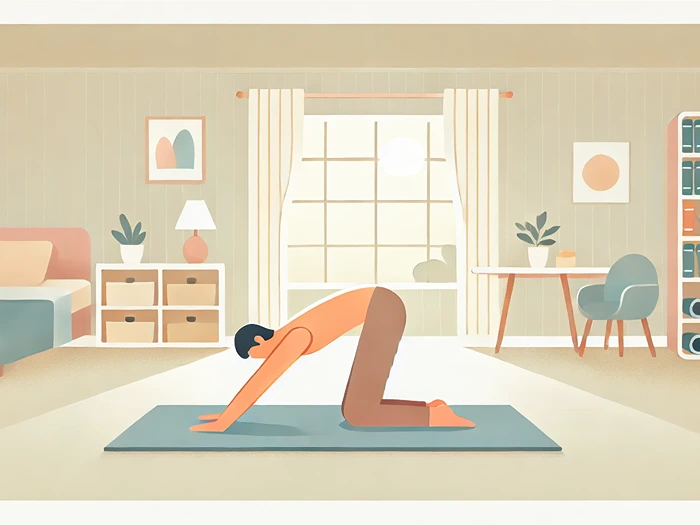
Combining the Best of Conventional and Alternative Health
In recent years, the conversation around health has expanded beyond the traditional confines of conventional medicine. More people are exploring alternative health practices, recognizing the value these approaches bring when combined with conventional treatments. Combining the best of conventional and alternative health is not just about choosing between two paths; it’s about creating a comprehensive approach to wellness that considers the whole person, including their physical, mental, and emotional health.
This approach to health combines the strengths of conventional medicine—such as evidence-based treatments and modern diagnostic tools—with the holistic focus of alternative medicine. The goal is to achieve optimal health by leveraging the benefits of both methods. In this article, we’ll explore the advantages of this combined approach, how to implement it, and the key considerations to keep in mind as you navigate your health journey.

What Are Conventional and Alternative Health Practices?
To understand the benefits of combining these two approaches, it’s important to define what we mean by conventional and alternative health practices. Conventional medicine, often referred to as Western medicine, includes treatments and therapies that are widely accepted and practiced by the medical community. These include pharmaceuticals, surgeries, and other interventions based on scientific research and clinical trials.
Alternative health practices, on the other hand, encompass a wide range of treatments that may not be fully accepted by the mainstream medical community but have been used for centuries in various cultures. These practices include herbal remedies, acupuncture, chiropractic care, meditation, and more. Alternative health approaches focus on treating the whole person—mind, body, and spirit—rather than just addressing symptoms.
Helpful Hint:
When exploring alternative health practices, it’s important to consult with a healthcare provider who understands both conventional and alternative methods. This ensures that any treatments you choose complement each other and work together for your overall well-being.
Why Combine Conventional and Alternative Health?
Combining conventional and alternative health practices offers a more well-rounded approach to healthcare. While conventional medicine excels at treating acute conditions and managing complex diseases, alternative health practices often focus on prevention and supporting the body’s natural healing processes. This combination can lead to improved overall health, reduced reliance on medications, and a more personalized treatment plan.
Stats:
According to a 2020 survey by the National Center for Complementary and Integrative Health, nearly 40% of adults in the United States use some form of complementary or alternative medicine, often in conjunction with conventional treatments.
One of the main benefits of combining these approaches is the ability to address the root causes of health issues rather than just treating symptoms. For example, a patient with chronic pain might use conventional medicine to manage their pain while also incorporating acupuncture or meditation to address underlying stress or inflammation that could be contributing to their condition.
How Conventional and Alternative Health Practices Complement Each Other
Conventional and alternative health practices complement each other in many ways. For instance, while conventional medicine provides immediate relief or management of symptoms, alternative practices often promote long-term healing and well-being. Combining the two can help patients achieve a balance between immediate needs and long-term health goals.
For example, someone recovering from surgery might use physical therapy (a conventional practice) to regain strength, while also incorporating yoga (an alternative practice) to enhance flexibility and reduce stress. The key is finding the right balance and combination of treatments that work for the individual.
Practical Tips for Combining Conventional and Alternative Health
When combining conventional and alternative health practices, it’s important to approach your health holistically and communicate openly with your healthcare providers. Here are some practical tips to help you integrate these approaches:
- Keep all your healthcare providers informed: Ensure that your conventional doctor and any alternative practitioners you see are aware of all the treatments and supplements you’re using. This helps avoid potential interactions and ensures that all aspects of your health are considered.
- Start with evidence-based practices: While exploring alternative health, start with practices that have some evidence of effectiveness. This might include acupuncture for pain relief, mindfulness meditation for stress management, or chiropractic care for musculoskeletal issues.
- Personalize your approach: There’s no one-size-fits-all when it comes to health. Work with your healthcare providers to develop a treatment plan that considers your unique needs, lifestyle, and preferences.
Common Misconceptions About Combining Conventional and Alternative Health
There are several misconceptions about combining conventional and alternative health practices. One common myth is that you have to choose one over the other. In reality, you can benefit from both by integrating them into a cohesive health plan.
Another misconception is that alternative practices are not scientifically supported. While it’s true that some alternative methods lack extensive research, many have been studied and shown to be effective for certain conditions. It’s important to research and choose alternative practices that have been validated by credible studies.
Helpful Hint:
Before starting any new treatment—whether conventional or alternative—do your homework. Look for studies, talk to practitioners, and make informed decisions that align with your health goals.
Common Alternative Health Practices and Their Uses
| Alternative Practice | Common Uses | Complementary Conventional Treatments |
|---|---|---|
| Acupuncture | Pain management, stress reduction, digestive health | Pain relievers, physical therapy |
| Herbal Supplements | Boosting immunity, improving digestion, managing anxiety | Pharmaceuticals, dietary changes |
| Yoga | Stress reduction, flexibility, mental clarity | Physical therapy, mental health counseling |
| Mindfulness Meditation | Reducing anxiety, improving focus, enhancing emotional health | Cognitive-behavioral therapy, anti-anxiety medication |
| Chiropractic Care | Back pain relief, improving posture, enhancing mobility | Physical therapy, pain management |
Potential Challenges and How to Overcome Them
While combining conventional and alternative health approaches offers many benefits, it’s not without challenges. One challenge is finding practitioners who are open to and knowledgeable about both types of medicine. It’s important to seek out providers who are willing to collaborate and respect your choices.
Another challenge is navigating the vast array of alternative health options available. With so many choices, it can be overwhelming to determine which practices are safe and effective. To overcome this, consider starting with well-known practices that have a strong track record, and gradually explore others as you become more informed.
How to Integrate Conventional and Alternative Health in Daily Life
Successfully combining conventional and alternative health practices requires a thoughtful approach to daily habits and lifestyle choices. By gradually incorporating alternative practices into your routine alongside conventional treatments, you can create a balanced and sustainable approach to health.

Start with Small Changes
Integrating alternative health practices doesn’t require a complete overhaul of your daily routine. Start with small, manageable changes. For example, if you’re looking to reduce stress, you might begin by incorporating five minutes of meditation into your morning routine. If you’re interested in herbal remedies, start with a well-researched herb like chamomile for its calming effects before expanding to other herbs.
Combine Physical and Mental Health Practices
One of the strengths of alternative health is its focus on the connection between mind and body. Consider combining physical health practices like regular exercise with mental health practices such as mindfulness or yoga. This dual approach can enhance overall well-being and help you manage stress, anxiety, and other mental health challenges.
Use Nutrition as a Bridge
Nutrition is a key area where conventional and alternative health practices often overlap. While conventional medicine provides dietary guidelines based on scientific research, alternative health approaches emphasize the use of whole, unprocessed foods and the healing properties of specific nutrients and herbs. By integrating both perspectives, you can develop a diet that supports your health in multiple ways.
Stats:
A study published in the Journal of Nutrition in 2019 found that a diet rich in whole foods and low in processed foods was associated with a 30% reduction in the risk of chronic diseases.
Examples of Successful Integration of Conventional and Alternative Health
To better understand how conventional and alternative health practices can be combined, let’s look at a few examples:
Managing Chronic Pain
Chronic pain is a common condition where conventional and alternative health practices often intersect. While conventional medicine may provide pain relief through medications or surgery, alternative approaches such as acupuncture, physical therapy, and herbal supplements can address underlying causes and promote long-term healing.
For instance, a patient with chronic back pain might use conventional treatments like pain relievers and physical therapy alongside alternative methods such as acupuncture and yoga. This combined approach can provide immediate relief while also addressing the root causes of pain.
Improving Mental Health
Mental health is another area where a combination of conventional and alternative approaches can be highly effective. Conventional treatments such as therapy and medication can be complemented by alternative practices like meditation, herbal supplements, and lifestyle changes.
For example, someone dealing with anxiety might work with a therapist (conventional) while also practicing mindfulness meditation (alternative) and using herbal teas known for their calming effects. This holistic approach can provide both immediate and long-term benefits.
The Role of Communication in Combining Health Practices
Communication is key when combining conventional and alternative health practices. It’s important to have open and honest conversations with all your healthcare providers about the treatments and practices you’re using. This ensures that everyone involved in your care is on the same page and can work together to create the best possible treatment plan for you.
Discussing Your Health Goals
When discussing your health with your providers, make sure to share your overall goals and any specific concerns you have. Whether you’re aiming to manage a chronic condition, reduce stress, or improve your overall well-being, being clear about your goals will help your providers offer the most relevant advice and treatments.
Keeping All Providers Informed
It’s essential to keep all your healthcare providers informed about any treatments or practices you’re using. This includes both conventional doctors and alternative practitioners. By sharing this information, you help prevent potential interactions between treatments and ensure that your care is coordinated and comprehensive.
Helpful Hint:
Consider keeping a health journal to track all the treatments, supplements, and practices you’re using. Bring this journal to your appointments to ensure that all your providers are aware of your complete health regimen.
When to Use Conventional vs. Alternative Health
Finding the right balance between conventional and alternative health practices can be challenging, but it’s crucial for achieving optimal health. The key is to understand when each approach is most appropriate and how they can work together.
Acute vs. Chronic Conditions
For acute conditions, such as infections or injuries, conventional medicine is often the best choice due to its focus on immediate, evidence-based treatment. However, for chronic conditions, such as arthritis or diabetes, alternative health practices can offer valuable support in managing symptoms and improving quality of life over the long term.
Preventive Care
Preventive care is an area where alternative health practices truly shine. By focusing on lifestyle changes, nutrition, and stress management, alternative approaches can help prevent the development of chronic diseases and improve overall well-being. These practices can be used alongside conventional preventive measures, such as regular check-ups and screenings, for a comprehensive approach to health.
Combining Conventional and Alternative Health
Pros
- Comprehensive approach to health by addressing both symptoms and root causes.
- Personalized treatment plans that consider the whole person, including mental and emotional health.
- Potential to reduce dependency on medications through complementary practices.
- Greater emphasis on preventive care and long-term wellness.
- Enhanced patient empowerment by exploring multiple health options.
Cons
- Finding healthcare providers who are knowledgeable in both areas can be challenging.
- Potential for conflicting advice or treatments if providers are not well-coordinated.
- Additional costs may be incurred for alternative treatments not covered by insurance.
- Some alternative practices may lack strong scientific evidence, leading to uncertainty.
- Navigating and integrating both approaches requires careful planning and time.
FAQs
Wrapping Up
Combining conventional and alternative health practices offers a well-rounded approach to achieving optimal wellness. By integrating the strengths of both, you can create a personalized health plan that not only addresses your immediate health concerns but also promotes long-term well-being. Whether you’re managing a chronic condition, seeking to reduce stress, or aiming for better overall health, this combined approach provides a comprehensive path forward. Keep communicating with your healthcare providers, stay informed, and make choices that align with your health goals. The balance between conventional and alternative health can lead to a more fulfilling and healthier life.




















